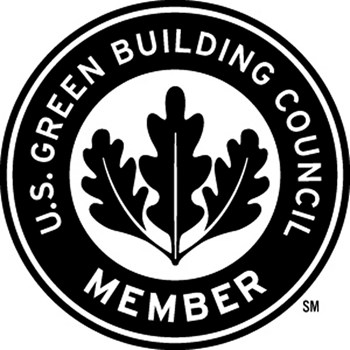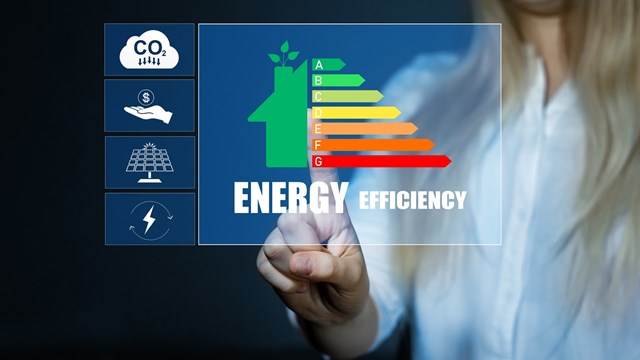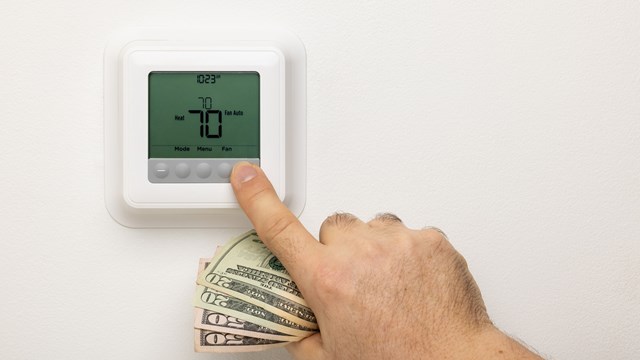
It seems that nearly everything is going “green” these days. Whether it’s the special green issue of a popular consumer magazine, an advertisement for a fuel-efficient hybrid car or a push toward environmentally friendly building materials, the message is clear: green is here to stay. But the idea of green building is not new—it’s been the primary mission of the U.S. Green Buildings Council (USGBC) since the organization’s founding in 1993.
This non-profit organization, based in Washington, D.C., emphasizes environmentally friendly construction and design through education, research and advocacy. Tied to its vision statement, the USGBC has an ambitious goal: Green buildings for everyone within a generation.
“Our whole mission is in market transition,” says Judith Webb, a communications strategist for the USGBC. “We will run ourselves out of business because eventually, every building will be green.”
Why Go Green?
With the majority of people’s time spent indoors, a clean, healthy indoor environment is essential to everyone’s well-being.
“Green buildings are healthier places,” says Webb. “We want to create human habitats that have clean lighting [and] good air, that are non-toxic, that have good acoustics and so on. The building type doesn’t matter, [because] we spend 90 percent of our time indoors. Shouldn’t we do everything we can to make those spaces as healthy as they can be?”
And when buildings go green—or start incorporating green ideas and practices— the result yields not only a healthier indoor environment, but a reduction in energy use as well. Green buildings are also beneficial to the outdoor environment.
“When you make the air cleaner and fresher, you can also reduce the energy you use,” says Webb. “You can install fixtures that use less water and proactively recycle waste so it will not end up in a landfill. Those are the kinds of issues we’re trying to get people to make better decisions about.”
Though it’s been an ongoing push, going green seems to have finally caught on with the general public. So why is everyone going green all of a sudden?
“What changed was the price of oil, the price of energy, and global warming,” says Webb. “All of a sudden you’ve got a business case—a family budget reason to do all these things. And in addition, it’s good for the environment. Once people finally got there, they were motivated to make a change because it was financial, and then they realized the value and benefit.”
But as with anything that becomes ubiquitous, going green is subject to something Webb calls “greenwashing.” She cautions the public to be aware of this growing trend, and be mindful of products, service providers and companies claiming to be “green” and environmentally-friendly while not changing their practices at all, or even doing things that might be harmful to both indoor and outdoor environments.
The LEED Program
The organization’s Leadership in Energy and Environmental Design (LEED) program is setting the standard when it comes to green design and building. Through its third-party certification program, the USGBC has created criteria for what makes a truly green building—and it’s not just simply installing energy efficient light bulbs.
“We’ve developed LEED, a certification program that gives everyone a common language or metric against which to develop properties. We have a third party who comes in and certifies that it is a green building,” says Webb.
“It is more than installing CFLs and bamboo flooring,” Webb continues. “It’s not just using energy efficiently. It’s also water, materials, where you site the building, the air quality—all of those things within our rating system set a metric against which people can measure which side of the line they’re on. It’s rigorous, and you have to show documentation to someone who then evaluates it.”
The LEED program has created a benchmark, says Webb, and now that it’s in place, the results are measurable and have proven to be effective. “Because we have all these buildings that have been through the process, we can prove that if you do all these things, these are the results we can get. It’s replicable. Now we can go back and measure buildings on that standard, and know that they will save at least 30 percent in energy, have better air quality, and so on.”
USGBC in New Jersey
Though the U.S. Green Buildings Council is a national organization, it has more than 78 local chapters to help the organization meet its goals throughout the country. New Jersey has its own chapter: USGBCNJ (www.usgbcnj.org).
The New Jersey chapter of the USGBC addresses the unique needs of residents who live in both high-rises or multi-family buildings, as well as more suburban settings. Different housing formats call for different considerations when going green. The mission of USGBCNJ is a state-sized distillation of the national organization's, to wit: “To be New Jersey's foremost leader promoting, advocating, and providing education for the planning, design, construction, operation and maintenance of high performance buildings and communities that are environmentally responsible, cost effective, productive, and healthy places to live, learn and work.”
The USGBCNJ is divided into three branches—the North Branch covers Sussex, Warren, Passaic, Bergen, Morris, Essex, Union, and Hudson counties. The Central Branch serves Hunterdon, Somerset, Middlesex, Mercer, Monmouth, and Ocean counties. The South Branch serves the remaining counties of Burlington, Camden, Glouster, Salom, Cumberland, Atlantic, and Cape May. Like its cohorts across the country, the New Jersey chapter does much of its work through the efforts of committees formed to address different aspects of the USGBC mission, including education, professional development, and legislative advocacy.
According to the USGBCNJ, “The Advocacy Committee works to advance the positions of USGBC NJ within the Legislature, before regulatory agencies, other trade associations, and the public. We work to insure that the principles of green building and LEED are accurately and effectively represented before each of these stakeholder groups.”
Perhaps of most interest to New Jersey's multifamily building and association administrators is the USGBCNJ's Green Building Valuation And Consultation Committee. For now, the committee consists exclusively of real estate valuation professionals, but according to the USGBCNJ, “We strongly encourage, welcome and will actively recruit diverse membership across a variety of disciplines, including but not limited to, architects, attorneys, consultants, engineers, planners, and real estate assessors, brokers, owners, investors and managers. Membership is open to students, educators, business and government professionals who seek to understand and measure how green/sustainable improvements impact real estate values and the environment.”
The committee's goal is to increase appraiser competence, promote green building as a best business practice, improve occupational health and productivity, and “help the private real estate sector, corporations, investors, lenders, and developers appropriately recognize the value and risk associated with investment in green buildings.”
Green Means Go
Whether your HOA is crunched for funds, or you're the newly-installed board of a brand-new, LEED-certified development, the USGBCNJ is there as a resource and reference for you to help you green your building for savings, make the most of the green technology you have, or both. For more information on the USGBC and USGBCNJ, visit www.usgbc.org, and www.usgbcnj.org.
Stephanie Mannino is a freelance writer and a frequent contributor to The New Jersey Cooperator.






Leave a Comment